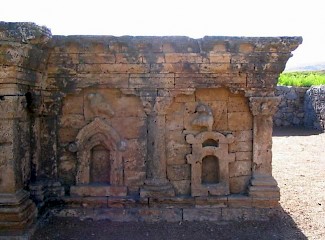The Frontiers of Classicism

Next month, I’ll visit Uzbekistan. I have never been there, so I am currently busily preparing. Among the things I had to do was to get a permit to visit Kara Tepe, an archaeological site not far from Termez on the Afghan border. “Why on earth,” asked someone, “do you want to see those dead stones?”
“Because it’s there,” I quoted George Mallory, but of course that’s no real answer. The real answer is far more serious: “because I want to understand the classics”.
Now you may wonder if it’s not easier to read, say, Sophocles or Seneca. Isn’t it better to study the core of the classics? The least you can say for it is that it saves you an unpleasant night flight to Tashkent. The more I travel, the more I hate it.
The problem – if that is the word – is that Sophocles and Seneca lived in Athens and Rome. The people they met more or less shared their values, their dilemmas, their ideas, and (because both were sufficiently wealthy) their status and their education. They could take Graeco-Roman culture for granted. They were rarely forced to define what their culture actually meant: which values mattered more than others, which artistic motifs really were important, which ideas were worth defending. To understand that, we need to go to areas where these things were not so self-evident.
I do not claim to have found the answers, but I have noticed that on the periphery, people really struggled to maintain a particular aspect of classical civilization, and that’s also the aspect that was first picked up when, in the Renaissance, people tried to emulate classical culture: architecture. For example, the inhabitants of Taxila (in what is now Pakistan) continued to use Greek decorative elements in their sanctuaries, even though they were Buddhists. The same can be said about the first Christians, who used basilicas and decorated the columns with Doric or Ionic capitals.
What this means, I don’t know, but apparently, it was easier to abandon one’s religious beliefs than the language of classical architecture. This is why, in Ancient History Magazine, we will not just focus on Athens and Rome, but will look at the periphery as well.
